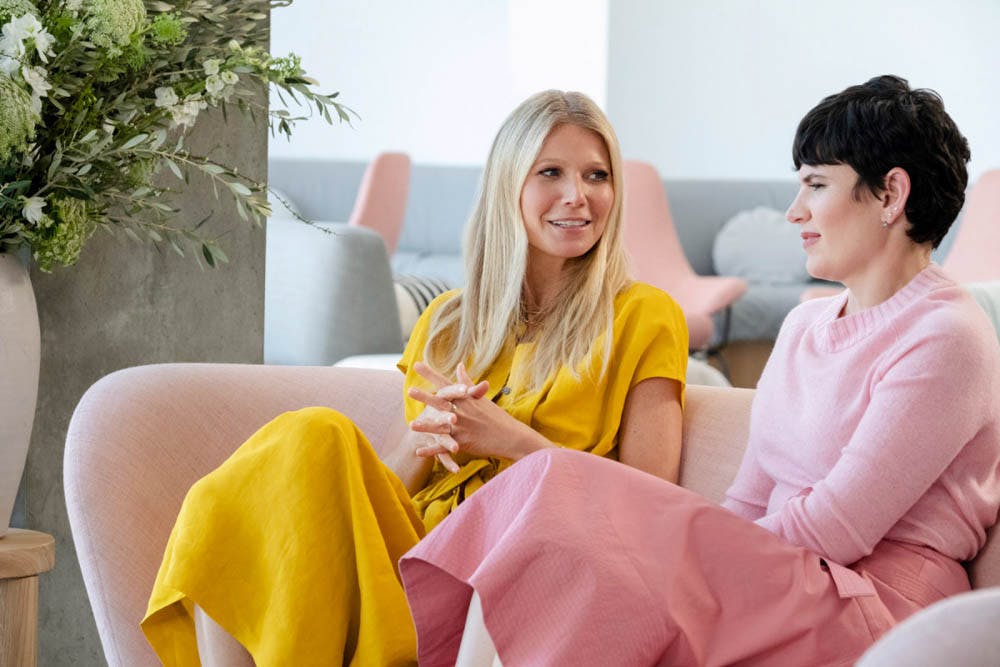“At the center of this glass bottle is rose quartz — the crystal of compassion, tenderness, and comfort,” describes an $80 water bottle on Santa Monica-based lifestyle brand goop’s web store. The Netflix series, “the goop lab,” released on Jan. 24, serves as a sort of realization of this luxurious gemstone-powered drinking vessel.
Packed with deliciously opulent approaches to wellness and high production value, the six episode docuseries traces what it means to embody the “open-minded ethos” of a goop employee, according to goop’s website. From psychedelic-induced meditation to lessons on female masturbation, “the goop lab” takes a holistic albeit expensive approach to the wellness phenomenon of the post-aughts age.
goop, founded by actress Gwyneth Paltrow in 2008, is a lifestyle brand frequently criticized for its participation in the modern health craze and pseudoscience. In the introduction sequence of each episode, Paltrow explains that she started goop because she knew her “calling had to be something other than kissing Matt Damon on screen.” Paltrow’s assertion of empowerment-via-wellness continues to present itself throughout the series, which promises the same sense of fulfillment for watchers who buy into the goop-ist praxis.
A few memeable products on goop’s website include a $75 “This Smells Like My Vagina” candle, and a Vampire Repellent Spray for, well, repelling vampires. Clearly, there is a market for goop’s product, as the company was valued at $250 million in 2018. The lifestyle brand seeks to exonerate itself in the new Netflix series, which demystifies goop’s own claims around health and wellness through interviews and experimentation.
The beginning of each episode opens with a disclaimer: “The following series is designed to entertain and inform — not provide medical advice.” Still, “the goop lab” has faced massive flack from media and scientific professionals — it is branded with a measly 2.3/10 stars on IMDb. But, “the goop lab” isn’t seemingly sinister or vacuous — it is a sunny, monied and occasionally ridiculous lens through which to view self-help, and it is emphatically presented as a mere supplement to professional medical treatment.
Each episode of the series follows a similar pattern. In attempt to remedy frequent criticisms of goop’s pseudoscientific solutions to health issues, the episodes each invite one alternative medicine practitioner and one licensed medical professional to provide commentary. The two “experts” engage in an interview with Paltrow and Elise Loehnen, goop’s chief content officer. Here the licensed professional serves to validate the claims of the alternative healer. What follows is a conversation between professional interviews and real time experimentation, where goop employees volunteer to go into the field and test out the alternative medicine practices.
The series premiere, “The Healing Trip,” documents the goop staff’s trip to Jamaica, where they explore the therapeutic power of psychedelic mushrooms. Aerial shots of the lush jungle landscape are broken up only by shots of poreless goop employee faces. During their hallucinogenic trips, “the goopers laugh, cry and release a gamut of intense emotions,” says Netflix’s blurb of the episode. This catharsis is most certainly visible in the viewing experience, which is at times disconcerting in its viscerality.
One employee, who breaks down in tears on camera while on her trip, reflects the morning after that she was “really drained physically and emotionally,” but that she felt as if she “went through five years of therapy in five hours.” This purge of the subconscious was something aided by the psychedelic experience, but the value of emotional connection it instilled “isn’t linked to Jamaica or Los Angeles or anywhere. It’s in you,” emphasized one of the ‘psychedelic psychotherapists.’
In the second episode, “Cold Comfort,” bikini-clad goop staffers plunge into frigid Lake Tahoe waters in the midst of winter. Scenic landscape shots and color grading beautify the emotional release induced by the ice-cold water temperatures, which seem to represent the mind’s ability to control how the body reacts to its environment.
Led by self-proclaimed ‘Iceman’ Wim Hof, the group of six goop employees seek to release anxiety through shock exposure. And, after exercising meditative breathing practices beforehand, they seem empowered in their newfound control over panic as they calmly take the jump into the lake. After the experience, one of the goop employees reflected, almost in tears and still shivering: “I don’t know if my anxiety will go away, but it was definitely a turning point.” This is the sort of humble optimism that “the goop lab” purports in its pseudoscientific practices — one that is harmlessly absurd, proposing improved health rather than touting it.
“the goop lab” is unique in the way that it presents these therapeutic methods of harnessing the power of emotion. The scenes alternate from sumptuous spiritual vacations to a palatial Santa Monica office, proposing a luxe, healthy lifestyle that almost no one would reject.
In that visualization of flawlessness and unattainability, “the goop lab” offers an expensive solution to self-care that doesn’t seem all too bad. The aspirational, expensive Californian lifestyle so prevalent in pop culture is reified in the goop series — and the ridiculous capitalist spiritualism is what makes the show so fun to watch.





